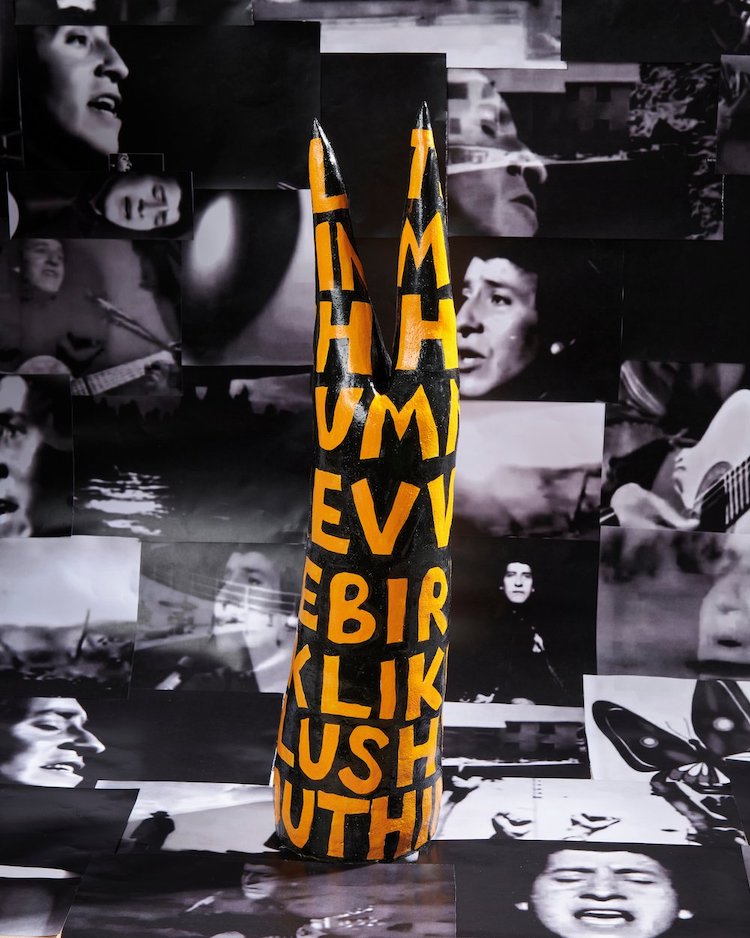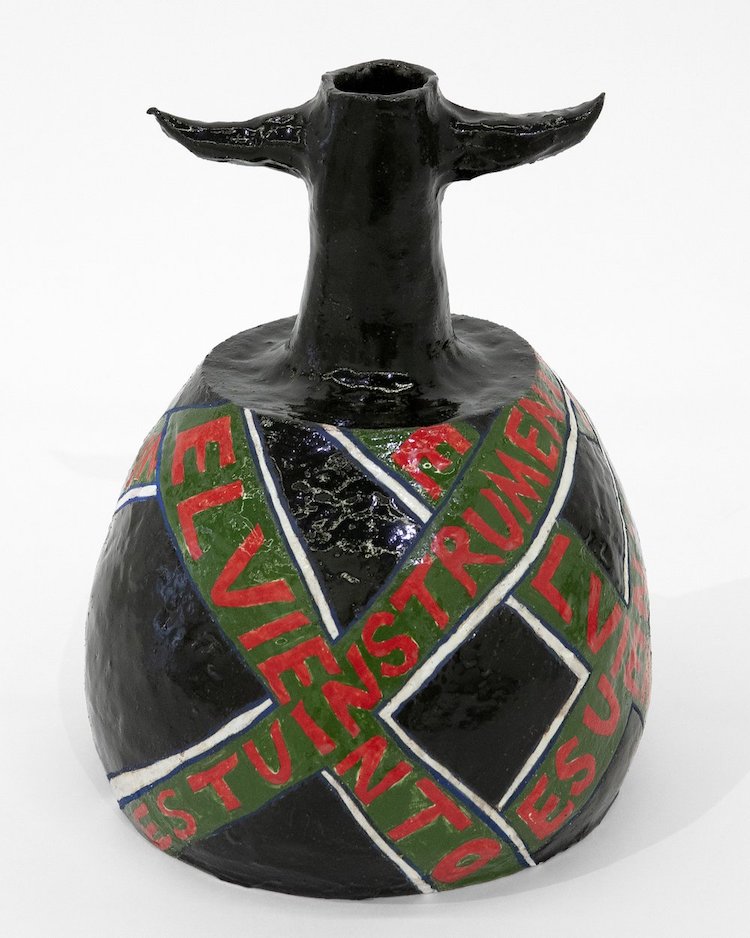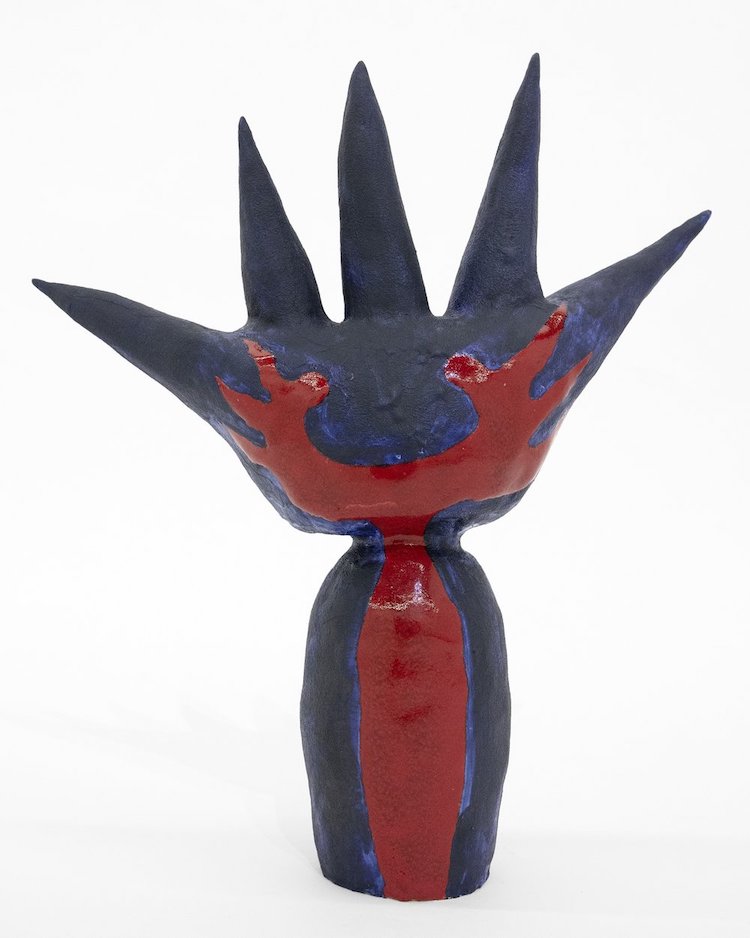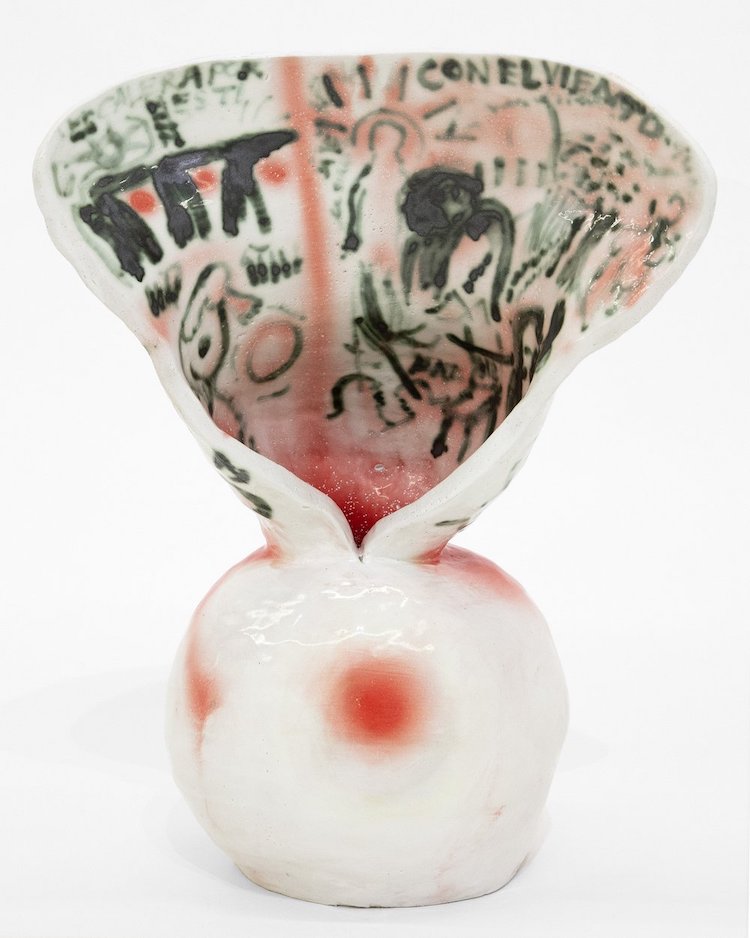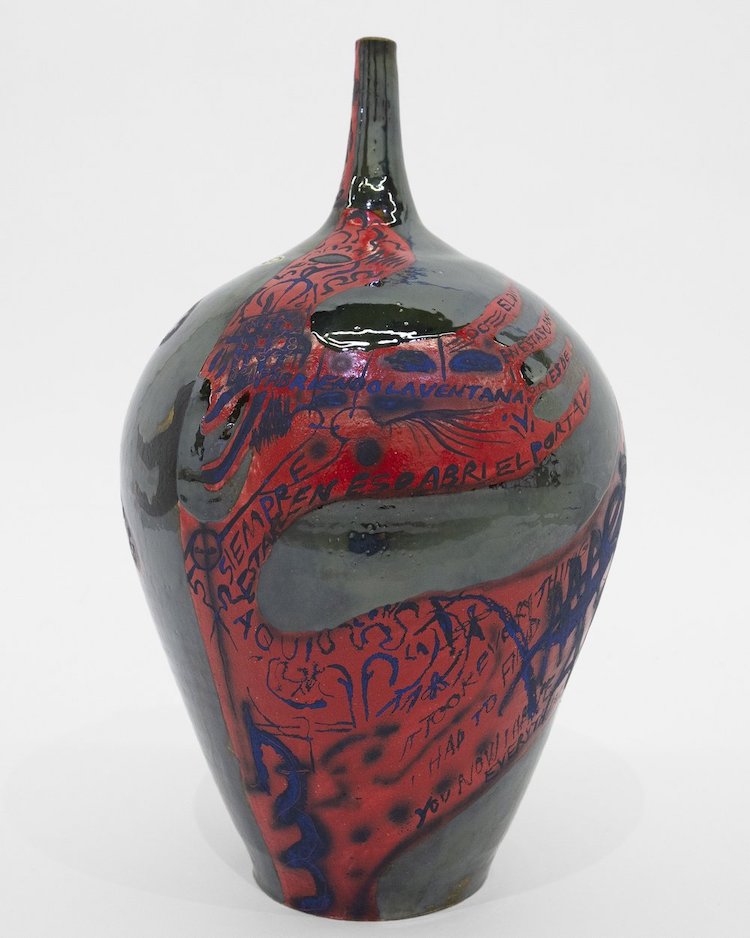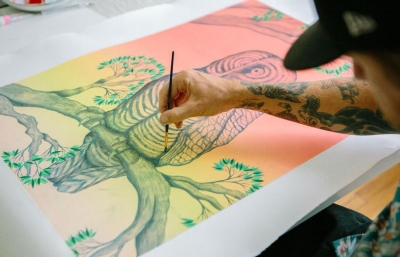pt. 2 Gallery is pleased to present Maria Paz’ first solo exhibition, POWER TO THE HIDDEN PARTS. Paz’ previous work in clay and painting placed an emphasis on telling stories. Their sculptures housed the tales of their family’s lives and lineages, threading the connective tissue of memory across experiences of precarity and displacement. Paz’ cavernous forms were shot through with holes and breakthroughs, with figurative vignettes and portraits painted on clay. Their vibrant surfaces suspended between invisibility and hyper-exposure brought the hidden into view with an arresting force.
Recently, as their painting practice moves toward the written word and the communion of patterns, Paz' work seeks out abstraction. In Power to the Hidden Parts, an installation wet and dense with Spirit, Paz’s new series of ceramic sculptures mounted on clay suggest a heaven-bound orientation. Here, the framework of images unravels into a network of hyper-affirmative lyrics. Writing on the verge of legibility, Paz’ lines are charged with a silent rhythm, broadcasting songs-cum-clay.
This show, too, began, in a sense, by a “circuit of listening”— between hearing voices and having a voice [Moten/Harney]. This time, Paz is writing songs whose words only appear in close proximity to clay. Paz’ sculptures are channels: instrumental in receiving the loving communications of their ancestors, to whom this show is dedicated. Such dedication creates a clearing, so the artist and their spirits can come through for each other, wired to power the hidden parts.
The coming-out scene: Victor Jarà sings “Maria, open the window and let the sun shine through all the corners of your house, now your eyes are filled with light and your hands with honey”. Queer—finally that word that can hold the way I love—queer—that poetry of invitations.
There are images on one sculpture, spectral figures engaged in a burning ritual: the angels circulating this piece seem to remember its own blazing passage through the kiln, the stratospheric drops of temperature falling into this newer form.
Then, there is one, dreaming of an arid landscape, the desert west of the Andes. It may offer quite a bit of texture to the touch, shapes extending sharply into space. Paz' ancestors are adamant about using bold, glowing color, striking and urgent in their potency. There are vibrant blues, deep greens, spirited yellows, and rich oranges contrasted against black. And the red, the red is power. Every color has a particular energy, is a precisely and fully applied emotion: High pigment is how we breathe.
The black and orange piece titled SALT IN MY SPEECH is glossy, bold and slender. The form is a little on edge, extending her slanted spikes and folding in a crease. Paz' lyrics sing of finding power in lush words, lush like the colors, lush and thick like their ancestors’ messages.
Writing their songs on clay, where they translate into color and the shapes capacity for vibration, is one proposition in an evolving practice. Silent in a sense, the opposite of noise, the letters and lyrics on Paz’ sculptures are bound up in the earth until EL VIENTO ES TU INSTRUMENTO (THE WIND IS YOUR INSTRUMENT) and takes them elsewhere: they feel like excited beginnings, traces of a beat that may engender many shapes. We want to hear a voice emerging, a body dancing it out, likely, Paz’ songs will turn into performances, video work, and recordings.
POWER TO THE HIDDEN PARTS is the first offering: songs written both by Paz’ ancestors and for them. Song is a higher power and a spiritual force Paz is fully positioning themselves in service of. Being of service, that hot queer possibility. For the artist, there is nothing more radical than this love: in tune with a revolutionary soundscape, whose resonances accumulate affection through time and distribute care among their people, they are inviting us to come through.
Text by: Be Schierenberg, Maria Paz, Victor Jarà.

